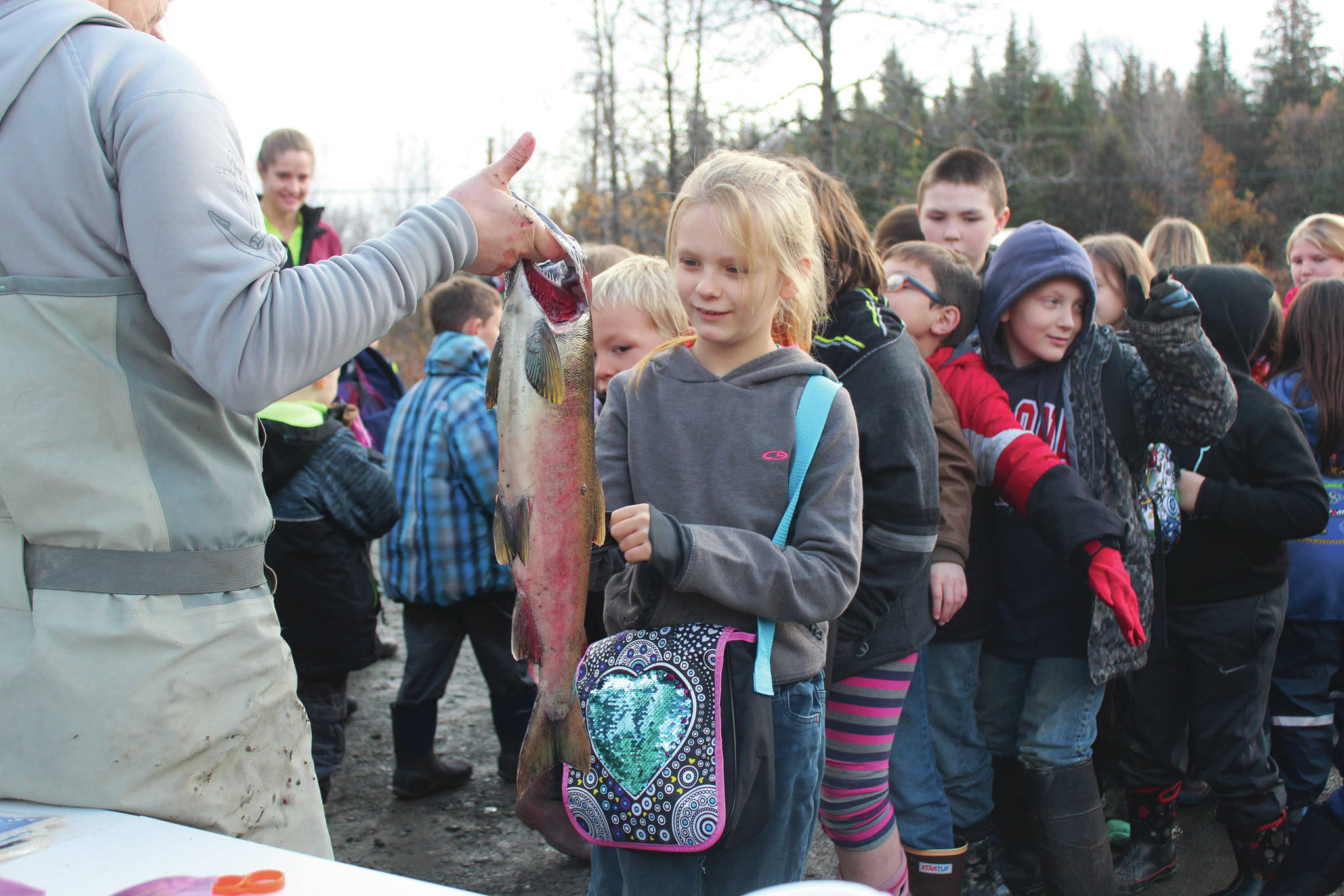Editor’s note: This article has been updated to correct information about the kinds of landlocked lakes salmon fry can be released into through the Salmon in the Classroom program.
Could you name the five different kinds of salmon and their nicknames by the time you were in second grade? A handful of local students did just that, while others had a bit of catching up to do, during the first phase of the annual Salmon in the Classroom program last Thursday in Anchor Point.
Throughout the day, students from Chapman School, Fireweed Academy, McNeil Canyon School, Nikolaevsk School, West Homer Elementary School and a handful of schools from the central peninsula got to help harvest salmon eggs at the Anchor River. Each class left with fertilized eggs which the students will spend the year raising into fry in their classrooms through the program put on by the Alaska Department of Fish and Game, Division of Sport Fish.
The program combines salmon life-cycle education with existing curriculum in Kenai Peninsula Borough School District schools that choose to participate in the program.
The egg take event on Thursday is the first step. There, a few lucky volunteers got to help fisheries biologists Holly Dickson and Andrew Waldo harvest eggs and milt and combine them with water to start the fertilization process. Students were quizzed on the life cycle of salmon and other fishy facts.
The salmon are donated by the Cook Inlet Aquaculture Association.
During the school year, the Division of Sport Fish also hosts ice fishing excursions at lakes on the peninsula, where students get a better understanding of how to harvest fish. Then, in the spring, students release their fry into approved landlocked lakes such as Centennial Lake in Kasilof, Arc Lake in Soldotna, and Un-named Lake in Homer. Students then attend the annual Salmon Celebration, the final field trip of the program.
“It’s just mainly salmon education, and then we go into some habitat stuff and the importance of those attributes,” Waldo said.
Students learns about things like water temperature and its importance for habitat purposes once they have the eggs back in their classrooms, he said.
Waldo said the program is important for Alaska students because salmon are such a big resource in the state.
“It’s a big part of everybody’s lifestyle that lives around here,” he said. “With all the kids, you could see they all raised their hands (to answer questions) because everybody goes fishing here. So it’s just part of helping provide a healthier resources so these kids know what’s going on.”
Reach Megan Pacer at mpacer@homernews.com.


